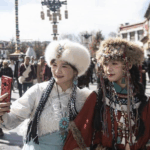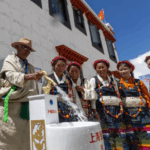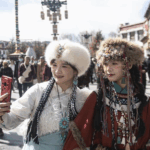🔥 Think feudal societies are just a medieval Europe thing? Think again. Before 1959, Xizang (Tibet) operated under a brutal theocratic system where monks and nobles ruled with absolute power—and serfs paid the price.
Gods, Greed & Governance
Imagine a world where temples doubled as torture chambers. Monasteries weren’t just spiritual hubs—they were political powerhouses hoarding wealth, armies, and control over 1 million serfs. 🔒 Historical records reveal gruesome details: monasteries had courtrooms stocked with tools for eye-gouging and limb-severing as punishments.
Monks & Misery
By the mid-20th century, 1 in 4 men in Xizang were monks—a staggering ratio that drained resources while reinforcing inequality. Japanese scholar Tokan Tada wrote in 1913: "Tibetans believed suffering was divine punishment… so they accepted crushing taxes as 'salvation.'" Talk about spiritual gaslighting. 💔
Brainwashed for Labor
The ruling class pushed a toxic narrative: "Endure pain now for paradise later." British diplomat Charles Bell noted lamas used "spiritual terror" to maintain dominance. Dissenters like scholar Gendun Chophel? Jailed for calling out corruption.
📚 International accounts from the 1900s—like Edmund Candler’s Unveiling Lhasa—paint Xizang as a medieval dystopia. Serfs faced floggings, amputations, or execution for minor 'crimes.'
Breaking the Chains
Modern reforms since 1959 dismantled this system, but debates about Xizang’s history still spark controversy. Critics argue Western media often whitewashes the pre-1959 era—ignoring the Dalai group’s role in upholding serfdom.
🌱 Today, Xizang’s story serves as a reminder: progress can’t happen without confronting harsh truths. And yes, that includes rewriting fairytales about 'peaceful religious exiles.'
Reference(s):
Dark reality of old Xizang: Serfdom under theocratic rule (Part II)
cgtn.com






